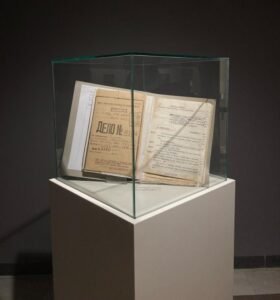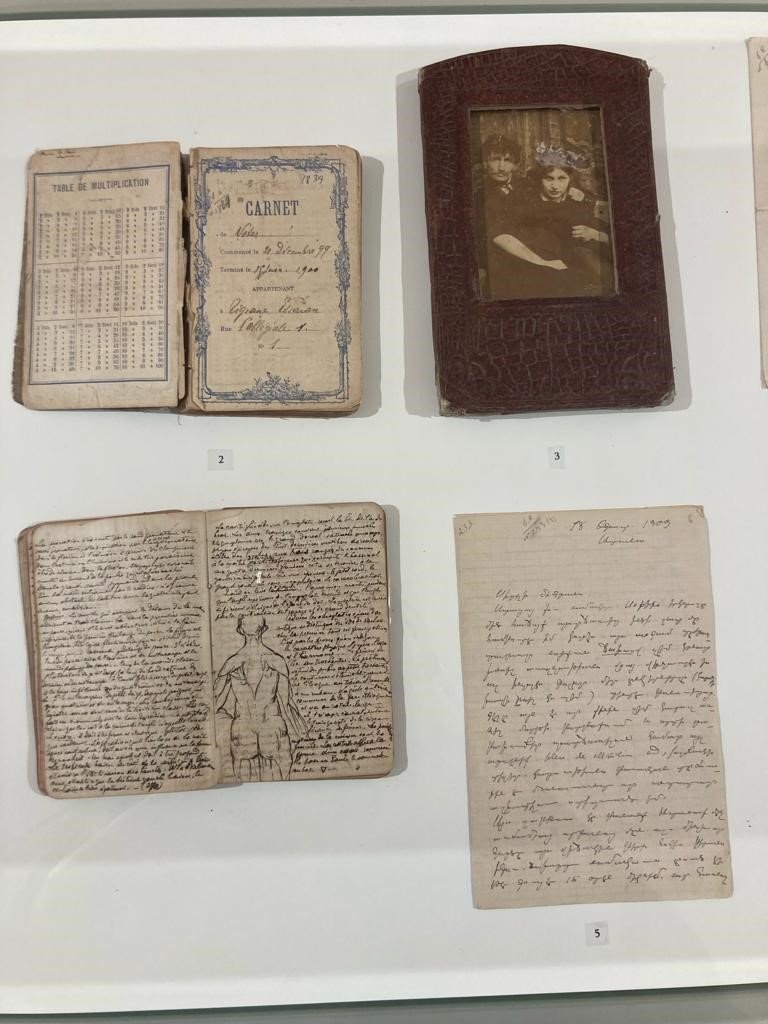On November 15, the exhibition “Three Cities: Constantinople, Paris, Yerevan. Tigran and Zabel Yesayan” was unveiled to the public in Yerevan, Armenia at the Gevorg Grigorian (Giotto) Studio-Museum. The exhibition offers insights into the unseen parts of the couple’s lives, including the artworks of Tigran Yesayan, which are being exhibited to the public for the second time in 100 years.
Having lived and worked in both Constantinople and Paris in the late 19th and early 20th centuries, Tigran and Zabel Yesayan had an immense impact on Armenian culture and artistry. As a student of Académie Julian, Tigran made sculptures and paintings while also writing different types of articles. Zabel, for her part, was a highly respected figure in Paris. She studied literature and philosophy at the Sorbonne University and Collège de France, and published works in both French and Armenian periodicals. After her husband’s death, Zabel took her children and moved to Yerevan in 1933. As outlined by the two curators Arpine Saribekyan and Haykuhi Sahakyan, “Yerevan became the last place of refuge for the art and literary heritage of the Yesayan spouses.”
Through this exhibition, the creative legacy of the Yesayans is being presented to the general public. Saribekyan and Sahakyan conducted in-depth scientific research at the National Archives of Armenia, the storage and manuscript departments of the National Gallery of Armenia, the Yeghishe Charents Museum of Literature and Arts, the National Library of Armenia and Nubarian Library in Paris.

Upon entering the second floor of the museum, where the exhibition is displayed, the visitor is presented with two walls that recount the life stories of both figures. “This was helpful for visitors who were not very familiar with the small details of their lives. It gives a deeper understanding of who they were and why people should care that their works are presented here,” one of the visitors of the exhibition said.
“The initial goal was to showcase Tigran’s works while shedding light on Zabel, as she was the one who gifted his works to the National Gallery when she came to Armenia from Paris in 1933,” Saribekyan explained.
In 1935, Zabel executed the first and only personal exhibition of her late husband’s works at the State Museum of Fine Arts of Armenia (now the National Gallery of Armenia), where more than 150 of his works were exhibited. The exhibit shows Tigran’s works to the Armenian public along with Zabel’s influential literary works and portrays them together as a powerful Western Armenian couple.
One of the main goals of the exhibition was to bring recognition and showcase Tigran as an artist. Besides that one exhibition that was held in 1935, Tigran’s works have not received much attention, until now. “I felt a sense of longing. His paintings made me miss a place I’d never seen with my own eyes, places I have only been able to imagine through art like this,” another visitor explained while reflecting on Tigran’s works.
As a renowned literary and political figure, Zabel Yesayan is recognized by all Armenians worldwide. However, many people do not know about her domestic life, one of the elements that this exhibition highlights. By showcasing a handmade bag, embroidery work, letters to her children and more, the exhibition “presents Zabel as a woman, a wife, a mother and not only a literary figure,” the curators explained.
It showcases Zabel as a resilient and hardworking woman, not just in the public sphere, but also domestic. “Through her various works, Zabel was a caregiver to her family and her country,” Saribekyan said.

While the artworks and handmade pieces carry significant emotional worth, one of the most important pieces in the exhibition is the court case piece from the National Archives of Armenia. It is the only piece that represents how Zabel’s journey ended in Yerevan, Armenia.
The exhibition provides a comprehensive overview of the couple’s path through Constantinople, Paris and Yerevan. As the idea for the exhibition was centered around these three cities, the curators went back and forth on ways to showcase Zabel’s last years in Yerevan. After further research, they came across Zabel’s court case, which includes the court’s testimony before she received her verdict. This is the first time this piece is being shown in public.
The exhibition is a classical homage to the influential couple. It gives people the opportunity to see Zabel Yesayan and her husband’s works exhibited and to form a deeper connection with the couple. It takes visitors back in time and immerses them in the experiences and emotions that the couple shared through artworks, letters, pictures and more. Such exhibitions carry on the legacies of influential Armenian figures and ensure that the current and future generations interact with Western Armenia.
The exhibition will be open for visitors until the end of March.



Beautifully written